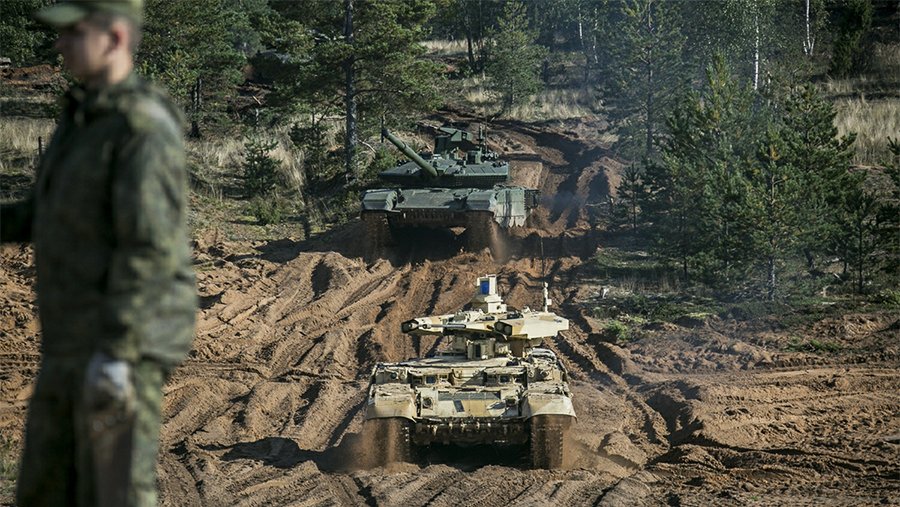On June 2, Ukrainian President Volodymyr Zelenskyy stated that Moscow had withdrawn around 10,000 troops from the border with Ukraine. “Hence, Russia is only declaring in words the withdrawal of its forces and the fulfillment of its obligations. In total, only about 10,000 servicemen have been withdrawn,” Zelenskyy said during a meeting with a United States Congressional delegation. The commander-in-chief of Ukraine’s Armed Forces, Lieutenant General Ruslan Khomchak, stated,
“The leadership of the Russian Federation continues to implement its plans for aggression against Ukraine. The enemy is keeping a group of Russian Armed Forces in the border areas of Voronezh, Belgorod, [and] Rostov regions and in the temporarily occupied Crimea” (UNIAN, June 2).
The increased Russian military presence, both in terms of equipment and personnel, close to the border with Ukraine remains ongoing one month later. And this will likely last until and possibly beyond the annual operational-strategic exercise Zapad 2021, scheduled for September 10–16. The joint Belarusian-Russian military exercise, which is staged every four years, will include the rehearsal of Russian-led operations against North Atlantic Treaty Organization (NATO) forces. The preparations for Zapad 2021 are far advanced, with the intensification of the summer combat training period across Russia focusing on the culmination of these events in the Zapad exercise. Shoigu characterized the force buildup that occurred in April as a snap inspection of combat readiness, aimed at preparing forces for the Zapad exercise. “It is important to determine the optimal workload for each young specialist, taking into account the actual level of his training and fitness. I would like to note that the current crew training system made it possible to successfully solve all the tasks assigned to the aviation formations during the April surprise check of combat readiness,” Shoigu said at a meeting of the defense ministry’s collegium (Tvzvezda.ru, June 1).
Despite the claims made every four years by the defense ministries in Minsk and Moscow that no more than 12,500 personnel are involved in accordance with the 2011 Organization for Security and Cooperation in Europe’s (OSCE) Vienna Document, the military leaderships in both capitals routinely suggest each Zapad exercise will be “large-scale” or “massive.” And the continued presence of Russian forces in close proximity to Ukraine appears to be consistent with the planned scale of Zapad 2021. According to Shoigu, the exercise will involve a “difficult air situation,” with the Russian Aerospace Forces (Vozdushno-Kosmicheskiye Sily—VKS) rehearsing operations in the Eastern Military District (MD). Such VKS training is already underway across the entire national system of Joint Strategic Commands (Obyedinennoye Strategicheskoye Komandovanie—OSK)/MDs (Tvzvezda.ru, June 1).
Shoigu also stated that as of early June, the joint preparations for Zapad 2021 entered their active phase. In addition to further joint planning meetings, the Special Forces of both countries will begin to train for the exercise. Based on Moscow’s initiative, the Zapad exercise will involve a single operational-strategic background. According to Belarusian Defense Minister Viktor Khrenin, the exercise scenario will involve potential escalation of the military-political situation against the “conditional adversary.” Also, the exercise will involve the use of joint assault forces to conduct urban warfare (Izvestia, May 31).
Another feature of Zapad 2021, which may in fact directly relate to the continued force buildup close to Ukraine, relates to the rehearsal of the “hidden deployment of troops.” Colonel General Aleksandr Zhuravlev, the commander of the Western OSK/MD, addressed this issue, saying that within the Zapad exercise framework, several vignettes in the overall scenario will be played out. This will include, among other elements, the covert deployment of a force grouping. Zhuravlev also said that attention will be paid to the role of battalion tactical groups during “non-standard” actions to repel enemy air and ground strikes. Zhuravlev emphasized that the forces involved in Zapad 2021 will be encouraged to avoid stereotypes and develop “unconventional thinking,” using “non-standard” methods among officers solving and performing the set tasks (Topwar.ru, June 11).
Zapad 2021 will draw on Russia’s recent experience of armed conflicts. It will witness joint efforts by forces from Belarus and Russia to repel enemy air attacks using unmanned aerial vehicles (UAV) and cruise missiles—a now-standard element in the Zapad series of military exercises. Moreover, the joint forces will work on the impact of fires and electronic warfare (EW) against the adversary, the use of tactical airborne units, and the ability of officers to switch rapidly from one type of combat to another. The Zapad exercise plan was agreed in October 2020 at the joint Russian-Belarusian defense ministry’s collegium (Topwar.ru, June 11).
During a recent working trip to Minsk, Russia’s Deputy Defense Minister Tatyana Shevtsova said the Zapad exercise will be used to test a new system of financing the Armed Forces in wartime. Shevtsova noted that modern wars are significantly different from the wars of the past, with diverse geopolitical, informational and or hybrid forms. In this regard, together with Russia’s General Staff, the Ministry of Finance, the National Center for Defense Management, the Federal Treasury and the Bank of Russia, documents were developed on the necessities of financial support for the Russian military in wartime. “For the first time, this system is planned to be tested on a full-scale within the framework of the Zapad strategic exercises,” Shevtsova added (RIA Novosti, June 18).
Read More:
- 40 troops of Russia’s “UN peacekeeping brigade” helped occupy Crimea, Donbas
- Threat of major Russian military operation against Ukraine and West hasn’t disappeared, Felgengauer says
- Escalation around Donbas: Is the Ukrainian army prepared for full-scale Russian aggression?
- Russia closing off more of Black Sea even as it pulls its land forces back from Ukrainian border








